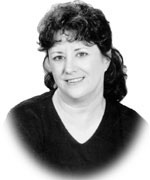 By Laine Welch February 20, 2006
Here is the projected breakdown for the 2006 salmon catch by species for chinook salmon, managers expect a catch of 780,000 fish, up from 682,000 last year. For sockeye, the harvest is projected at 35.6 million, down from 43.28 million last year. The coho catch is pegged at five million, up just a tick from the 2005 take of 4.79 million. For pink salmon, managers project a catch of 108 million, compared to more than 161 million humpies harvested last year. And for chum salmon, the projected catch is 17.6 million, up from 11.3 in 2005. The value of the 2005 salmon
catch showed a big increase over that of the previous three years,
ringing in at $305 million dollars at the docks. That compares
to $257 million in 2004 and $195 million in 2003. Last year marked
the first time that the value of broke the 300 million dollar
barrier since 1999, when the salmon harvest was valued at $370
million. Find the 2006 harvest breakdowns by region and fisheries
at www.cf.adfg.state.ak.us. "Our thinking is that there is a lot more we can do if we get everyone working together to change fishing to make it smarter to reduce bycatch of any kind," said Kim Davis, deputy director of WWF's Marine Conservation Program. Davis said she is mystified why the Smart Gear contest has once again not drawn any ideas from Alaska. "I'm sure you have a lot of very ingenious fishermen and we hope to hear from them in the next few weeks. We have gotten a lot of interest from the other side of the Pacific, notably Russia," she said. In all, Davis said entries are lagging well behind last year when 50 ideas were submitted from 16 countries (13 came from the U.S.). So far, only 10 entries have come in from six countries, three from the U.S. - the New York scallop fishery, a California trawl fishery and the Hawaii longline fishery. "We expect to get a rush of ideas in the last week or two. That was the case last year," she added. The contest, which is judged
by an international panel, awards a $25,000 first prize and two
$5,000 prizes. Last year's winning idea, which came from New
Caledonia, modified longlines to set them faster and deeper,
resulting in fewer takes of turtles and increased tuna catches.
That concept will begin large scale testing in April by NOAA
Fisheries in Hawaii's tuna fishery. Another winner combined glowing
ropes and stiffer nets that helped marine mammals avoid gillnets,
a system of angled metal grids and net meshes that allowed small
fish and shrimp to swim away also took home a cash prize. The
deadline to enter the 2006 Smart Gear contest is March 15. Winners
will be announced at the Brussels Seafood Show in Belgium on
May 11th. Get more info at www.smartgear.org. The state Division of Investments will count all the votes and conduct the RSDA election. All ballots must be postmarked by May 1, and the Division will announce the results in mid-May. If Bristol Bay fishermen approve the tax, they will elect a board of directors and determine how to proceed. "This is going to be a completely fishermen controlled organization - how the money is spent, what programs, priorities and strategies are developed. It's a first in that regard," Waldrop said. He added that RSDA programs go far beyond marketing and promotions, but can also include such things as infrastructure and new product development, improved ice availability, refrigerated staging areas at airports, market research, etc. Waldrop said there is still
a lot of misunderstanding about RSDA's but the interest level
is rising. "The more they learn about fishermen control,
the more comfort they have with the concept," he said.
A public meeting on the Bristol Bay RSDA will take place on Feb.
27 at 7pm at the Dimond Center Hotel in Anchorage. Compass Group, which has more than 152,000 associates in the U.S., Canada and Latin America, said it will begin its new policy on March 1 of this year by replacing purchases of Atlantic cod with Pacific cod and Alaska pollock. It also will decrease its use of shrimp and salmon that are farmed in ways that are harmful to the environment. Compass Group said it will base its buying guidelines on the Seafood Watch list from the Monterey Bay Aquarium. Germany-based retail giant
Metro Group, with 1,800 stores in 29 countries, is already removing
nearly all shark products from its shelves. Metro will source
its seafood products from those bearing the Marine Stewardship
Council seal of approval. Alaska salmon, pollock, and cod caught
by the Bering Sea freezer longline fleet already have the MSC
label; Pacific halibut and sablefish are also set to get the
eco-label soon. Publish A Letter on SitNews Read Letters/Opinions Submit A Letter to the Editor
|
||
